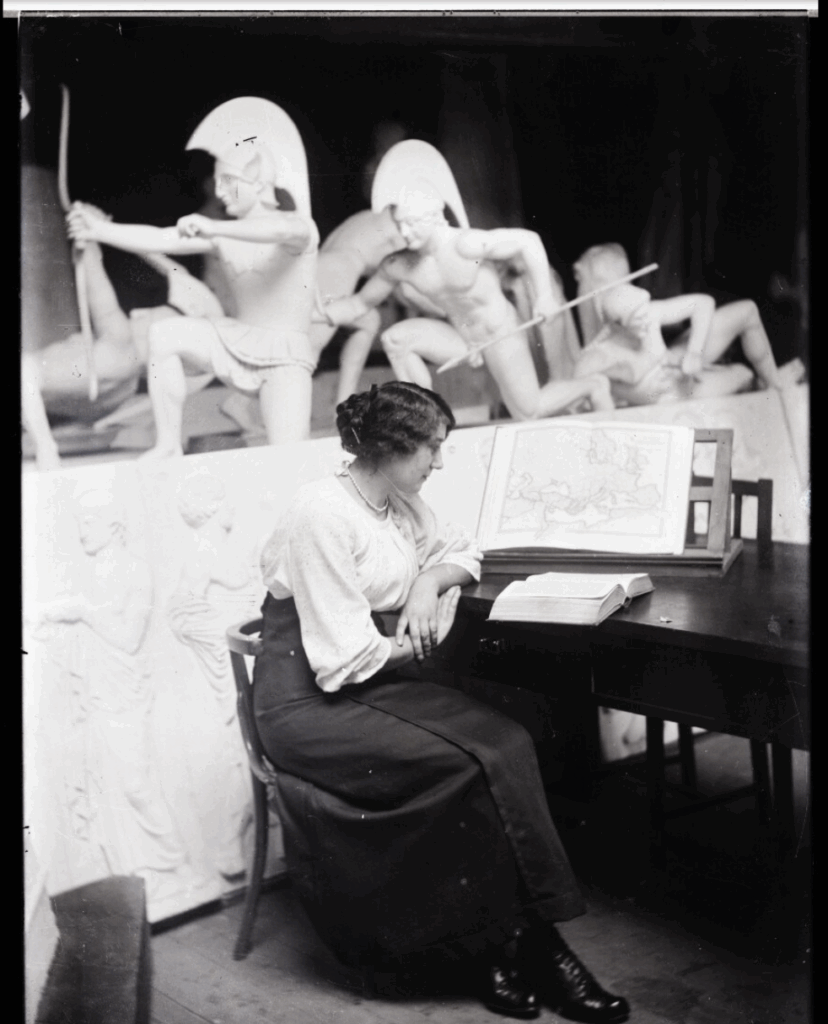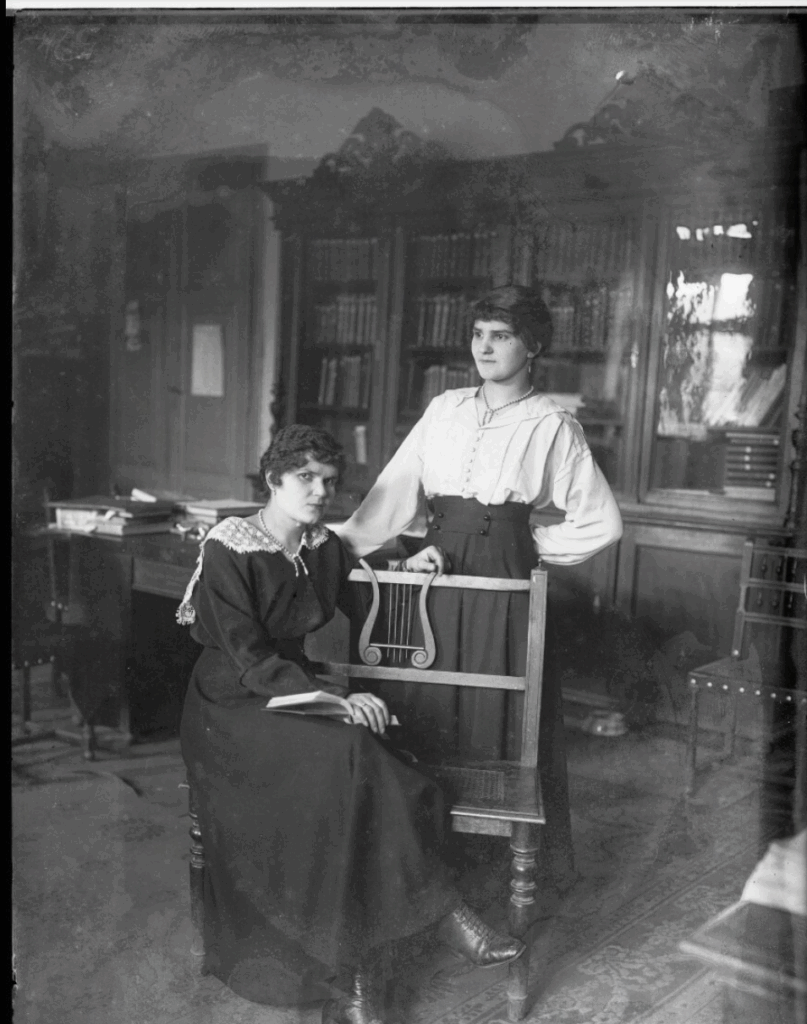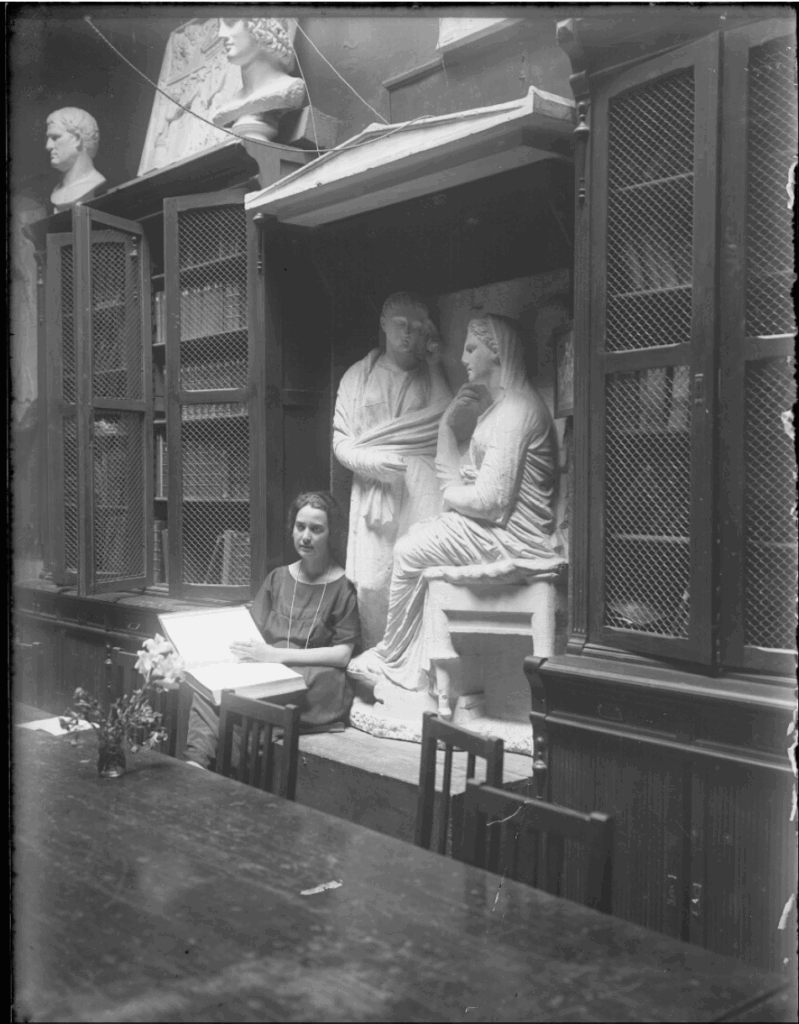The photographs of this archive allow us to analyse the garments worn by these students, which are not only period dress, but also part of the sartorial language that encodes information about the identity of the educated woman in early 20th century Romania.
The usage of shirtwaists with tailored long skirts was very popular in the beginning of the 20th century, balancing contemporary fashion and practical necessity among female workers and students.
The shirtwaists typically featured defined collars. The style of the collars varied, including soft rounded necklines, V-necks, white lace collars or simpler designs without lace – however, the most common were high structured necklines. Long sleeves were also essential, appearing in various forms. These could be puffed, more form-fitting and narrow, or a combination of fitted sleeves with slight pleating near the shoulders. Most of the shirtwaists from these students were buttoned down the front, and in terms of decorative details, lace, ruffles, pleats, and bows were common among the students. While most of these women used their shirtwaists with a loose fit at the bust, some others wore a tighter more fitted silhouette.
A common characteristic of the skirts is their length – all of them appear to be long, reaching the floor or nearly so. The waistlines were high and the silhouette volume varied, with some skirts being more voluminous and others more fitted and loose. Although some of these skirts had buttons at the front, most had simpler designs with no embellishments.
Most students appear to have worn low-heeled shoes. Due to the length of the skirts, it is hard to tell if they are wearing boots – but the visible footwear seem to be closed-toe boots, as it is possible to see some extend above the ankle area and have laces that run through eyelets.
The hats some of the students wore ranged from wide-brimmed and structured hats with dramatic brims to cloche-like styles and small, close-fitting caps. Some were decorated with fabric bands, ribbons and small embellishments.
For outwear, most students wore tailored, structured coats that buttoned at the front. The length of the coats varied but most of them seem to reach below the waist. One student is seen wearing an ankle length coat, paired with a fur collar, a hat and a fur muff. Other students are seen posing with muffs, some larger, some smaller but all made of fur.
The photographic archive of the “Vasile Parvân” Institute of Archaeology extends its historical significance beyond the documentation of archeological practice to offer a critical lens through which to examine sartorial culture. The garments worn by the female students of the University of Bucharest constitute a key part of Romania’s fashion heritage. This attire does not only reflect the period’s trends but also articulates a specific social identity of the academic professional woman. By preserving these visual testaments, the archive provides invaluable primary evidence for understanding how fashion functioned as a language of practicality, professionalism and feminine emancipation in early 20th century Romania.


